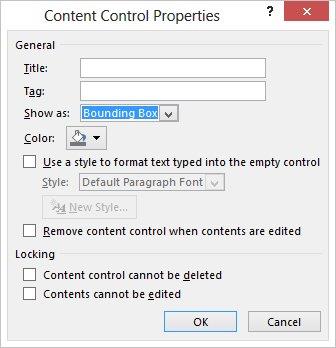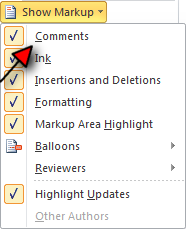
Thus, when you later open the document or someone else opens the document, they can see all that markup. The markup-all your tracked changes and all your comments-are still there, even though you cannot see them. All the things I've discussed so far only hide markup by changing what is displayed. Which brings us to the second thing to keep in mind relative to markup: Hiding markup isn't the same as getting rid of markup. Using the Display for Review drop-down list, choose either No Markup or Original Document, and the markup all disappears. You can also turn off the display of markup by using the Display for Review drop-down list, which is in the Tracking group, right above the Show Markup drop-down list. You can also control what markup is displayed by clicking the small icon at the bottom-right of the Tracking group, which displays the Track Changes Options dialog box.

Most people control what markup is displayed in a document by using the Show Markup drop-down list on the Review tab (in the Tracking group). You can use the New Comment tool to add comments to the document and you can use the Track Changes tool to start keeping track of any editing or formatting changes. Markup is added in two general ways, using tools available on the Review tab of the ribbon. The second thing to remember is that hiding markup isn't the same as getting rid of markup. ("Markup" is a generic term that refers, among other things, to Track Changes marks and comments added to the document.) The first thing is that markup can be displayed or hidden. There are two things to keep in mind in relation to markup in a document.
HOW TO DELETE MARKUP AREA IN WORD 2007 FULL
Even when Andree-Jeanne sends it by e-mail without marks, it opens full of markup and tracking marks. She switches them off and saves the document without all the marks in her document, but when she opens the document again, there they are again.

Andree-Jeanne has a problem with switching off markup and Track Changes.


 0 kommentar(er)
0 kommentar(er)
